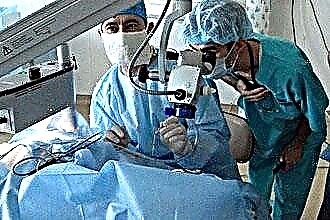Distinguish between external, middle and internal otitis media, labyrinthitis. Treatment of ear inflammation directly depends on the location of the lesion. This is due to the causes of the disease, clinical manifestations, the condition of the tympanic membrane, the involvement of the cochlea in the process. The same factors determine the timing of how much otitis media is treated.

The most favorable course and minimum treatment time are characteristic of otitis externa, which can proceed in a diffuse form or be localized, as with the development of a focus of pyoderma in the external auditory canal or auricle. In this case, only local treatment is required, consisting of ear drops or ointments containing an antiseptic and anti-inflammatory component.
Otitis externa can be treated without antibiotics.
The use of antibacterial agents, even local, can only be discussed with pronounced clinical manifestations, accompanied by general malaise, an increase in body temperature. To relieve pain, treatment of otitis media in an adult in this case includes the following drugs:
- 3% alcoholic boric acid solution;
- ear drops Otipax;
- Bactroban ointment.
Among the antibiotic drops that could be prescribed for otitis externa, the drug Candibiotic has gained popularity. This is due to the wide spectrum of action of this medication. In addition to a local anesthetic and an antibiotic, the composition also contains an antifungal agent, which makes it active against various pathogens.
Features of the treatment of otitis media
Treatment for otitis media depends on the integrity of the eardrum and the presence of otorrhea.
At the first preperforative stage, treatment of otitis media in an adult includes:
- the appointment of drops that have anti-inflammatory, analgesic effects;
- warming procedures;
- in case of severe course, severe intoxication, antibiotics in tablets;
- to reduce the pressure of exudate in the middle ear and improve the patency of the auditory tube, the use of nasal drops with a vasoconstrictor effect.

As drops with an analgesic effect, Otipax drops are widely used, which include the local anesthetic lidocaine and a non-steroidal anti-inflammatory agent. Sofradex may also be effective if used for its anti-inflammatory effect. As for the antibacterial component, at this stage one should not count on this effect, since the antibiotic cannot penetrate through the tympanic septum, and, therefore, its effect will be limited to the external auditory canal.
To relieve pain in otitis media, a 3% alcoholic solution of boric acid, heated to body temperature, is widely used. This agent, which is an antiseptic, has a pronounced analgesic effect. However, the drug can only be used with otitis externa or catarrhal.
The presence of suppuration with otitis media is a contraindication for the use of boric acid.
Otherwise, the 70% ethyl alcohol it contains can be toxic to the middle ear, leading to hearing loss.
In addition, there are certain rules on how to properly bury your ears:
- For instillation, use means warmed up to body temperature, that is, 35-40 degrees. To do this, hold the bottle in your hand for several minutes before use;
- Before the procedure, the patient must take a horizontal position. Burying is carried out alternately on one side, then on the other;
- The time interval between instillation of both ears should be several minutes;
- In the event that the external auditory canal is filled with exudate, a procedure is first performed to evacuate the contents, mucus, pus;
- In many cases, it makes sense to carry out an ear injection using the injection method. With such manipulation, it is necessary to press on the tragus with a finger, closing the passage, and carry out injection movements into the ear cavity.
First aid for otitis media consists in the use of vasoconstrictor nasal drops.
 Since in most cases the development of ear inflammation is due to swelling and the presence of mucus in the auditory tube, the use of nasal drops contributes to the fact that the disease can regress at the initial stage. You can relieve pain with otitis media by using drugs with an analgesic effect inside, such as paracetamol, ibuprofen.
Since in most cases the development of ear inflammation is due to swelling and the presence of mucus in the auditory tube, the use of nasal drops contributes to the fact that the disease can regress at the initial stage. You can relieve pain with otitis media by using drugs with an analgesic effect inside, such as paracetamol, ibuprofen.
Dry heat in the form of heated salt or sand, heating pads, vodka compresses are those physiotherapeutic procedures that can be done for ear inflammation in adults. However, warming procedures should be stopped immediately if the pain syndrome intensifies, the general condition worsens.
During the period when suppuration appears, any physiotherapeutic procedures are contraindicated, since their implementation can lead to the spread of the process.
To treat otitis media in adults with antibiotics, they begin 2 days after the lack of effect from other methods of treatment. In the preperforative stage, drugs of the amoxicillin group or its compounds with clavulanic acid, such as augmentin, amoxiclav, are more often used. The perforating stage allows for a wider use of local agents, drops of Otofa, Tsipromed.
Paracentesis
Otitis media in adults is treated for a long time, for at least 10 days, even if the clinical symptoms regress by the second or third day. An examination by an otolaryngologist is extremely important throughout the treatment. It is the ENT doctor who, using instrumental diagnostic methods, will be able to clarify the diagnosis if the ear is inflamed, and decide on the subsequent tactics.
With increasing symptoms of intoxication, as well as pain syndrome, the performed otoscopy allows you to clarify the condition of the tympanic membrane, and to resolve the issue of the need for paracentesis.
Ear surgery for otitis media requires maintaining the immobility of the operated organ. Therefore, it is carried out under local anesthesia in adults and under anesthesia in children. A puncture is made in the eardrum with a special instrument, allowing the contents of the middle ear to escape. Thus, the possibility of a breakthrough of pus into the region of the mastoid process of the temporal bone and the development of mastoiditis, a brain abscess, is prevented.
With the appearance of suppuration, the treatment tactics changes somewhat. It is necessary to treat otitis media in adults, based on the fact that thermal procedures are contraindicated during this period, as well as the use of drugs that can have a toxic effect on the structures of the middle ear. Hazardous substances include alcohol-containing drugs, non-steroidal anti-inflammatory drugs, as well as antibiotics with ototoxic properties, gentamicin, kanamycin, netilmicin. The use of antibiotics in the drip form is justified in this case. In the case of combination drugs, the instructions for the drugs must be carefully studied, since non-compliance with the conditions can have tragic consequences for the preservation of the patient's hearing.
the drip form is justified in this case. In the case of combination drugs, the instructions for the drugs must be carefully studied, since non-compliance with the conditions can have tragic consequences for the preservation of the patient's hearing.
With otitis media in the perforation stage, a regular toilet of the external auditory canal is a necessary procedure. In the event that it is not possible to carry out these activities in a specialized office, cotton tows soaked in a 3% hydrogen peroxide solution are used to evacuate pus.
With ineffective treatment of acute otitis media, the presence of concomitant diseases from the ENT organs, frequent acute respiratory viral infections, as well as a genetic predisposition to this pathology, there may be a transition of acute inflammation into a chronic form. This pathology involves the surgical treatment of ear inflammation. In this regard, a large role is assigned to preventive measures, including increasing immunity, as well as the treatment of concomitant pathology.




